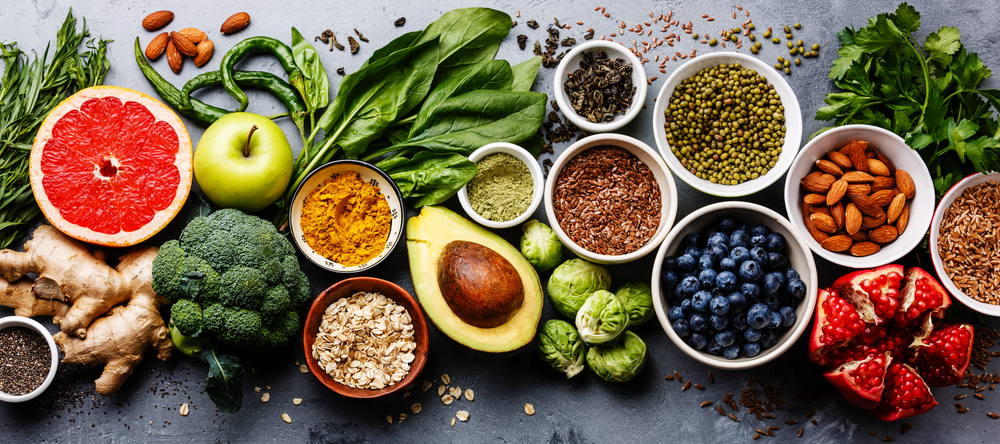Brushing the teeth twice a day, flossing once daily and visiting your pediatric dentist for routine dental care are all important ways to prevent tooth decay in children. However, unfortunately, sometimes even the best brushers end up getting cavities. It can be frustrating as a parent to deal with a cavity in spite of your child having a solid oral hygiene routine.
But, the truth is, cavity prevention goes beyond brushing and flossing and also includes what and how often your child eats. In this post, I’ll be covering everything you need to know about nutrition and dental health in kids.
The Tooth Decay Process
Before we dive into the ins and outs of nutrition for healthy teeth, let’s talk about how cavities actually develop. Kids (and grown-ups) have bacteria in their mouth that feed on sugars and starches in foods and drinks. As the bacteria break down the carbohydrates, they release acids and form plaque, a sticky bacterial film.
The plaque acids leach minerals from the tooth enamel, a process called demineralization. Then, minerals are deposited back into the enamel during a process known as remineralization. Saliva, fluoride and foods high in calcium, phosphate and arginine help with remineralization.
Tooth decay develops when minerals are being lost from the enamel faster than they’re being replaced. As tooth decay progresses, a hole can form in the tooth. The hole is what we call a cavity.
What Foods Cause Cavities?
What does sugar do to your teeth? Are carbs bad for teeth? I get these questions a lot as a Washington DC pediatric dentist. It’s not that kids should avoid all carbs. In fact, they need complex carbohydrates for energy. However, while some foods contain carbohydrates that don’t break down until further along in the digestive tract, others contain fermentable carbohydrates that break down in the mouth. When this happens, it starts the decay process.
These fermentable carbohydrates, such as candy, cookies, soda, chips, pretzels and refined grains provide fuel for oral bacteria, both while the food is near the bacteria and for about 30 minutes afterwards. The effects of acids are cumulative, and when the bacteria are constantly feeding, forming plaque and releasing acids, cavities are more likely to occur.
Cavities Also Come Down to Time
I read an excellent book on the subject called, More Chocolate, No Cavities: How Diet Can Keep Your Kid Cavity-Free by Dr. Roger Lucas, a dentist and a dad. I’d recommend it to any parent who wants to learn more about cavity prevention through food choices. In the book, Dr. Lucas talks about how sugars and starches cause cavities, and some seemingly nutritious foods, when given to kids frequently throughout the day, are actually the biggest cavity offenders.
Dr. Lucas notes that whether a food is going to cause cavities or not depends on:
- if it contains carbohydrates,
- how long the food will stay stuck on the teeth,
- and how fast the food is eaten.
Foods that can be eaten quickly and don’t stick to the teeth or can be washed away easily, minimize the length of time kids’ teeth are exposed to cavity-causing acids. Once the bacteria have nothing to feed on, the pH in the mouth returns to normal and the minerals in your child’s saliva are deposited back into the enamel, giving remineralization an edge.
So, something like a raw apple, while it contains sugar and carbohydrates, is crunchy and doesn’t cling to the teeth. It’s also pretty juicy and not something most kids will carry around for a long time and leisurely snack on. A child generally eats a raw apple within a few minutes.
Dried fruit, like raisins, on the other hand, also contain carbohydrates and sugars, but they’re sticky and will stay on the enamel for longer. Raisins are small and dried too, so kids are likely to carry them around for a while and eat them slowly. Because of this, the raw apple is a better option than the dried fruit.

Another point Dr. Lucas makes throughout the book is that a piece of 70 percent dark chocolate is better for kids’ teeth than crackers and pretzels. Why is that? Dark chocolate has more fat than it does sugar. Cavity-causing bacteria have to work their way through the fat first, causing them to process the sugar more slowly. Dark chocolate may also have chemicals that can strengthen enamel. Plus, it melts in the mouth instead of sticking in the pits and grooves of the teeth unlike those crackers and pretzels.
Based on all of that cavity science, these are the foods that are most likely to lead to cavities in kids:
- Candy (especially sticky candy and hard candy that is sucked on for a long duration)
- Cookies
- Cakes
- Pretzels
- Chips
- Crackers
- Dried fruit
- Fruit snacks
- Muffins
- White bread
- Breakfast cereal
- Chocolate milk
- Soda
- Juice (even 100% fruit juice has fermentable sugars)
- Sports drinks
Nutrition for Healthy Teeth and Gums
So now that we’ve talked about what foods are more likely to cause cavities when eaten frequently or throughout the day, what does nutrition for healthy teeth look like? While even some healthy foods like bananas and oranges can easily cause cavities, when they’re eaten as part of a well-rounded diet and not every day, they won’t damage kids’ teeth, and the vitamins and minerals in them will promote good oral health.
In comparison, dried, processed foods almost always stick to the teeth more easily and generally don’t retain as many nutrients as their fresh counterparts. By choosing fresh, unprocessed foods when you can, it will go a long way in keeping tooth decay away. Offer kids a variety of age-appropriate vegetables and fruits (crunchy is the best option), whole grains, lean protein, dairy or dairy alternatives, and healthy fats.
It’s a good idea to include foods that contain key minerals and vitamins for teeth and gums too, such as:
- Calcium (milk, cheese, broccoli, kale, yogurt, calcium-fortified soy milk, almond milk, oat milk, etc.)
- Phosphorous (cheese, lentils, chicken, fish, nuts and beans)
- Arginine (nuts, seeds, whole grains, dairy products)
- Vitamin D (fatty fish like salmon and tuna, eggs, cheese, mushrooms and fortified foods)
- B vitamins (fish, leafy greens, meat, eggs, milk, legumes, yogurt and nutritional yeast)
- Vitamin C (bell peppers, citrus fruit, cruciferous vegetables like cauliflower and broccoli, tomatoes and berries)
The best foods for kids’ teeth are those that contain vitamins and minerals listed above, especially phosphorus, calcium and arginine, which will aid in remineralization and can help counteract acidity in your child’s mouth. They should also be low in fermentable carbohydrates and not likely to get stuck in teeth like:
- Raw, crunchy vegetables
- Raw, leafy vegetables
- Nuts
- Cheese
- Milk
- 100% nut butters
- Poultry and other meats
- Fats
- Water
- Eggs
Other foods, while many of them are healthy, are considered moderate in that they can cause cavities, but they usually won’t when they’re not eaten all day long and are given to kids as part of a well-rounded diet. These include:
- Fresh, firm fruit (i.e., apples, pears, etc.)
- Whole grain bread
- Smoothies
- Popcorn
- Dark chocolate (70% cocoa or more)
- Ice cream
- Yogurt
- Oatmeal
Mixing and matching the options from these lists when putting together meals and snacks will help prevent cavities in toddlers, children and teenagers. When giving kids something sweet, opt for dark chocolate because of the fat content and potential health benefits or the occasional scoop of ice cream, which washes off the teeth easily.
Tips for Cavity Prevention Through Diet

Aside from helping kids make smile-friendly food choices, here are other things you can do to ensure your child’s diet promotes good oral health and helps them stay cavity-free:
- Limit snacking as much as possible and offer only water in between meals. How often kids eat is just as important as what they eat when it comes to dental health. Constant snacking and sipping feeds the bacteria in the mouth and increases cavity-causing acid attacks. When kids do need a snack, offer a food that’s low in fermentable carbohydrates like nuts or cheese. Have kids finish the drink or snack in one sitting instead of saving it and enjoying it over time.
- If possible, encourage kids to brush their teeth after eating, especially if they eat a sticky food or a treat like a lollipop, to get rid of any residue and plaque. If they can’t brush, ask them to swish with some water.
- Serve sugary or starchy treats like cookies, chips and candy in moderation and as part of a larger meal (or as dessert immediately after), instead of as a snack. Saliva production ramps up during mealtime, which helps rinse off food debris and neutralize plaque acids. And, most kids have a drink with their meal, which further helps with cleaning the teeth.
- Keep an eye on those acidic foods. While things like citrus fruits and tomatoes are perfectly fine and even healthy in moderation, they do make kids’ mouths even more acidic, which may worsen demineralization and erosion. After eating or drinking something acidic, give kids some water to swish in their mouth.
- Never put your baby to bed with a bottle filled with milk, formula, breast milk or juice. The sugars in the drink will sit on their teeth all night long and since kids don’t produce as much saliva when they’re sleeping, it won’t get washed away. This can cause what’s known as baby bottle tooth decay. If you do give your child a bottle or sippy cup at bedtime or before naps, fill it with water.
- Again, have sticky foods or those that make prolonged contact with the teeth, such as hard candy, only on special occasions or avoid them altogether. Instead, opt for a well-balanced diet filled with smile-friendly nutrients and fresh foods.
- Older kids can benefit from having a sugarless mint or chewing sugarless gum with xylitol. Chewing gum or sucking on a mint after meals stimulates saliva production. Why xylitol? Does xylitol prevent cavities? Yup! It’s thought that xylitol, a natural sweetener, inhibits the growth of cavity-causing bacteria and reduces plaque formation. Just be mindful of your kiddo’s xylitol intake, because in large quantities, it can have a laxative effect.
- Chat with your pediatric dentist about your child’s diet and nutrition. When kids visit Smile Valley Pediatric Dentistry in DC, I always assess their risk for cavities and offer personalized recommendations for cavity prevention, including nutrition counseling.
Connect with a DC Dentist for Kids! At Smile Valley Pediatric Dentistry in Washington, DC, my team and I put kids at ease and make oral health engaging and fun. After learning about your child’s lifestyle and needs, I can offer tailored guidance on diet and nutrition for cavity prevention. If you live in DC, Bethesda, MD, Chevy Chase, MD or the surrounding area, schedule an appointment for your child with us today!











